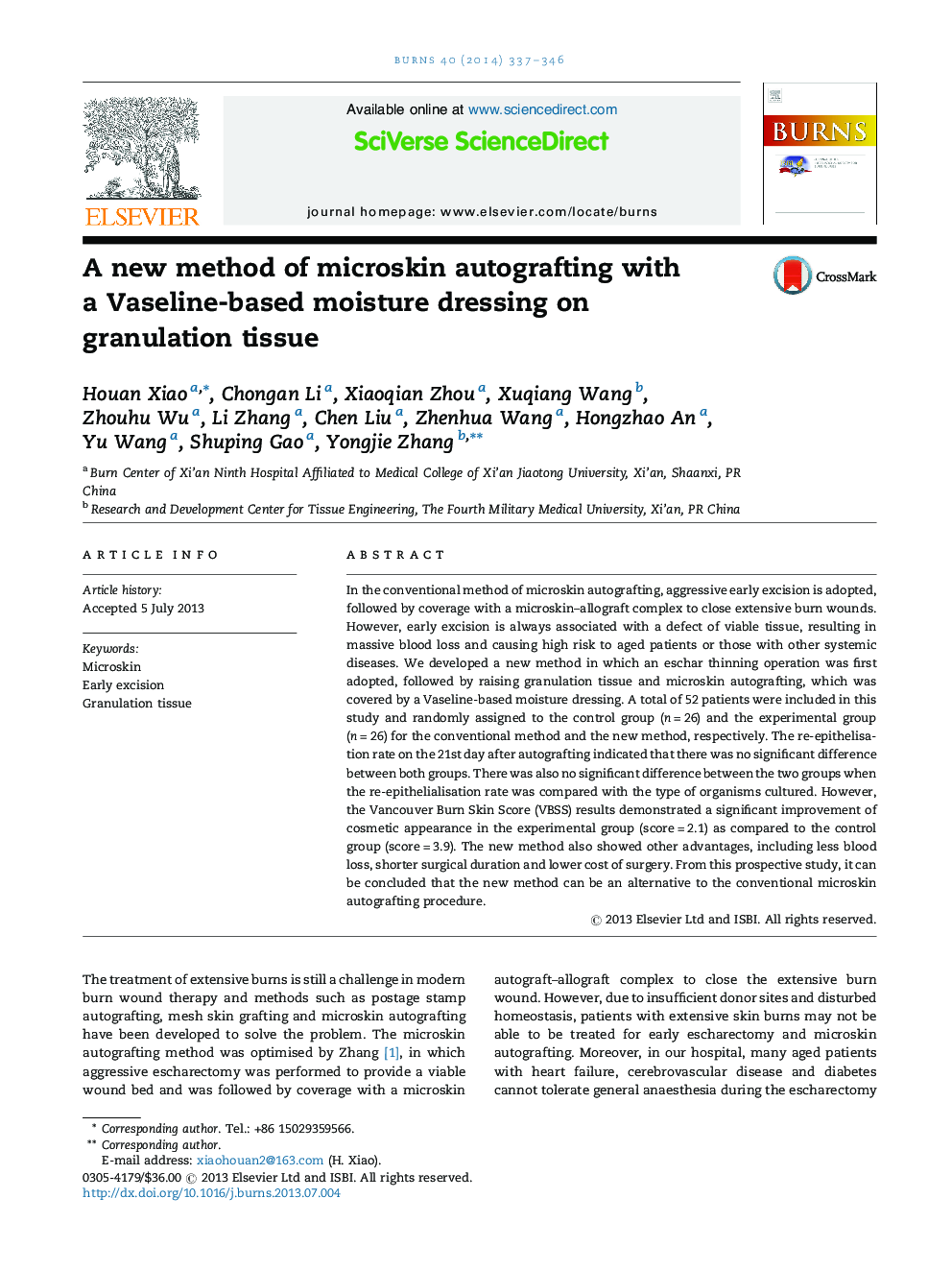| Article ID | Journal | Published Year | Pages | File Type |
|---|---|---|---|---|
| 6048749 | Burns | 2014 | 10 Pages |
In the conventional method of microskin autografting, aggressive early excision is adopted, followed by coverage with a microskin-allograft complex to close extensive burn wounds. However, early excision is always associated with a defect of viable tissue, resulting in massive blood loss and causing high risk to aged patients or those with other systemic diseases. We developed a new method in which an eschar thinning operation was first adopted, followed by raising granulation tissue and microskin autografting, which was covered by a Vaseline-based moisture dressing. A total of 52 patients were included in this study and randomly assigned to the control group (n = 26) and the experimental group (n = 26) for the conventional method and the new method, respectively. The re-epithelisation rate on the 21st day after autografting indicated that there was no significant difference between both groups. There was also no significant difference between the two groups when the re-epithelialisation rate was compared with the type of organisms cultured. However, the Vancouver Burn Skin Score (VBSS) results demonstrated a significant improvement of cosmetic appearance in the experimental group (score = 2.1) as compared to the control group (score = 3.9). The new method also showed other advantages, including less blood loss, shorter surgical duration and lower cost of surgery. From this prospective study, it can be concluded that the new method can be an alternative to the conventional microskin autografting procedure.
